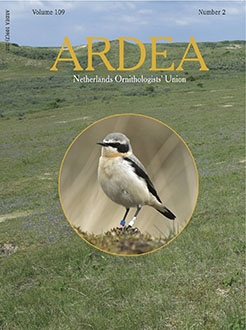We aimed to describe the morphologic and isotopic differences of European Goldfinches Carduelis carduelis according to their migratory behaviour or geographic origin. We compared morphologic and isotopic variables between birds caught in two different obligatory migratory pathways (eastern and western border of the Pyrenees) and throughout the post-breeding period (from late summer to winter). The isotopic and morphological traits varied across seasons (from autumn to winter), indicating that birds captured later in the season had traits typical of longer-distance migrants that come from regions situated further north. Moreover, our results suggest that Goldfinches caught in the eastern and western borders of the Pyrenees slightly differ in body size and in one of the two colour patch-associated traits, but not in their flight apparatus or isotopic values, these last being more strongly related to their areas of origin. Such observed regional differences, therefore, may be more strongly related to other selection pressures.
How to translate text using browser tools
1 June 2021
The Role of Mountain Ranges in Shaping Population-Associated Routes of Migration: A Case Study of European Goldfinches in the Pyrenees
Juan Arizaga,
Marcelo Brongo,
Luis Romero,
Juan F. Cuadrado,
David Giralt,
Francesc Sardà-Palomera,
Sergi Sales,
Gerard Bota
ACCESS THE FULL ARTICLE

Ardea
Vol. 109 • No. 2
November 2021
Vol. 109 • No. 2
November 2021
bird migration
Carduelis
flyways
Iberian Peninsula
morphology
stable isotopes




